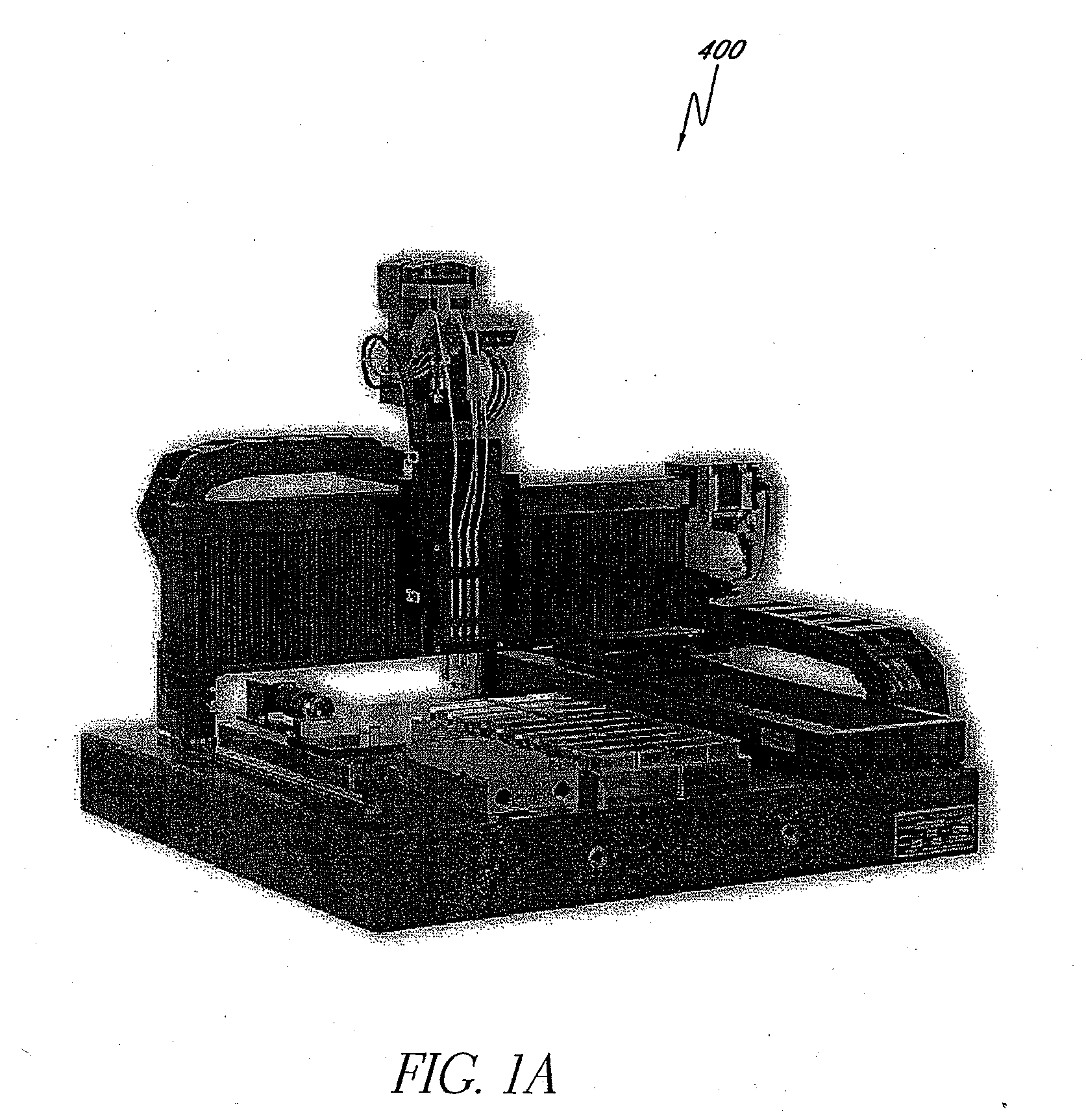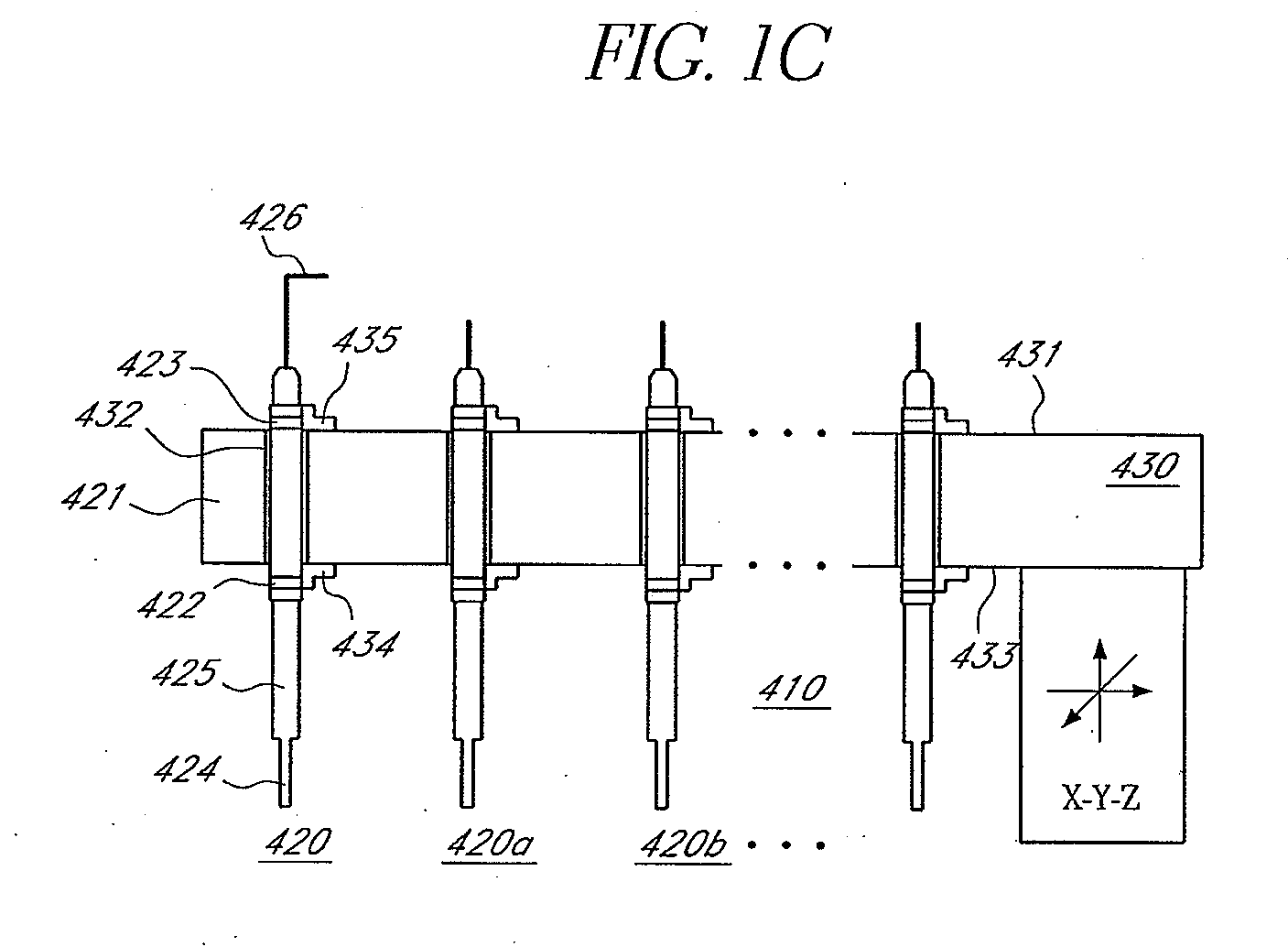Systems and methods for high speed array printing and hybridization
a high-speed array and hybridization technology, applied in the field of diagnostic systems and methods, can solve the problems of disadvantageous slow processing throughput and high cost of reagents for large spotting libraries
- Summary
- Abstract
- Description
- Claims
- Application Information
AI Technical Summary
Benefits of technology
Problems solved by technology
Method used
Image
Examples
Embodiment Construction
[0071]The preferred embodiments of the invention described herein relate generally to diagnostic systems and methods and, in particular, to systems and methods for high speed array printing, hybridization, quantitative development and assaying.
[0072]While the description sets forth various embodiment specific details, it will be appreciated that the description is illustrative only and should not be construed in any way as limiting the invention. Furthermore, various applications of the invention, and modifications thereto, which may occur to those who are skilled in the art, are also encompassed by the general concepts described herein.
Some Non-Contact Dispensing Technology Embodiments
[0073]The working drop volume range suitable for production arrays lies in the range of picoliters to nanoliters which, in certain embodiments, is delivered by non contact methods in order to desirably meet process speeds which are suitable for high production throughputs.
[0074]In some embodiments, to...
PUM
| Property | Measurement | Unit |
|---|---|---|
| sizes | aaaaa | aaaaa |
| volumes | aaaaa | aaaaa |
| volumes | aaaaa | aaaaa |
Abstract
Description
Claims
Application Information
 Login to View More
Login to View More - R&D
- Intellectual Property
- Life Sciences
- Materials
- Tech Scout
- Unparalleled Data Quality
- Higher Quality Content
- 60% Fewer Hallucinations
Browse by: Latest US Patents, China's latest patents, Technical Efficacy Thesaurus, Application Domain, Technology Topic, Popular Technical Reports.
© 2025 PatSnap. All rights reserved.Legal|Privacy policy|Modern Slavery Act Transparency Statement|Sitemap|About US| Contact US: help@patsnap.com



